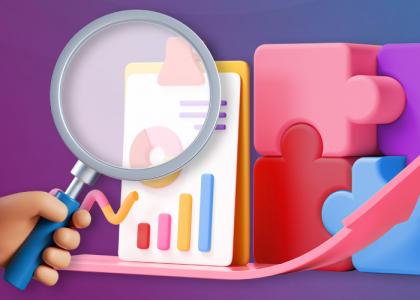Utilising data effectively helps organisations avoid running blind

The volume of data available could overwhelm many organisations. A clear data strategy is needed.
Businesses today have access to more data than ever before. There is an array of tools to help make sense of it when grappling with vast amounts of information. For leaders, this should mean ample opportunities to make data-driven decisions to help optimise performance and supercharge business growth.
However, despite the support offered by technology, many organisations are overwhelmed with the sheer volume and velocity of the data they hold. While they intend to use it to their advantage, disjointed processes and dormant ‘shelfware’ is keeping a wealth of data stuck in silos – untapped and underutilised. Without a clear data strategy, organisations will be running blind, unable to access the relevant data needed to make stronger predictions and smarter decisions.
In years to come, the volume of data held by businesses will grow exponentially – as will its potential to transform businesses and become a catalyst for innovation. To avoid struggling with the same old problems, organisations must urgently recalibrate their relationship with data, learn how to read it and ultimately interrogate it effectively. So, instead of turning a goldmine of data assets into digital landfill, leaders now have an opportunity to utilise the right tech solutions to harness the power of analytics as a vital competitive advantage.
The data treadmill
Data is captured by every business, in every department, every day. It’s everywhere. Almost 180 zettabytes of data volume is expected, worldwide, by 2025. Enterprise data grew by an average of 42% last year alone! Data can tell invaluable stories for organisations of any size – from customer patterns and trends to the efficiency of processes.
But an organisation’s data is only useful if they know what questions to ask. Currently, many find themselves on a data treadmill, constantly ‘catching up’ but struggling to make progress because they are not utilising or optimising the data analytics tools at their disposal. In fact, very few companies are embracing the full spectrum of tools and methodologies available. A recent MHR survey found 81% of businesses spending disproportionate amounts of time on laborious manual data processes. This resulted in 41% stating their people data is outdated – a clear ‘reporting lag’. By focusing on simply managing the mechanics of data, such as moving and storing it, businesses struggle to unite and access real-time data insights – instead creating disjointed silos that lack the enterprise-wide connectivity and visibility needed to identify what can be improved.
Other businesses simply don’t know what they want to achieve with their data. Some are unaware of what they are capturing in the first place. This has not been helped by organisations rushing to buy new systems during the pandemic and subsequently leaving them gathering dust, or only using them to a fraction of their potential. In other cases, data scientists have been brought in but do not know where to start, as the wider business lacks a clear data strategy. All too often, analytics are left as an afterthought.
To avoid lagging further behind, businesses must become much more data savvy. Leaders need to ascertain the key decisions their organisation needs to make, and where they can get the data to support those decisions. This will only happen when business and data strategies are aligned.
Uniting business strategy and data strategy
Any good business strategy has a data strategy – a strategy that must complement and align with the data being captured to measure improvements and ultimately drive business growth.
One of the four pillars of digital transformation – a strong data strategy is a cultural shift that requires top-down leadership. Leaders can ensure the purpose and use of data is directly linked to core business goals, while guaranteeing that a new data-optimised culture is developed throughout the company, thereby bridging the gap between business strategy and implementation. In turn, aligning business and data strategies enables organisations to accurately measure the success of strategies currently in place, giving them greater visibility over the steps needed to drive further improvements.
A data scientist is often seen as the solution but often they are not supported with the in-depth knowledge of how the business operates to ensure true strategic alignment. Therefore, an integrated software solution is needed to ensure that business and data are fully intertwined throughout the organisation. With the right tech solution in place, complex data processes can be streamlined and simplified through automation, empowering businesses to make informed strategic decisions from accurate data.
Aligning business and data strategies within a single, robust and highly adaptable platform, the best software solutions will generate eye-opening insights that keep companies on top of their data – ensuring that they are not running blind in the race towards data maturity.

